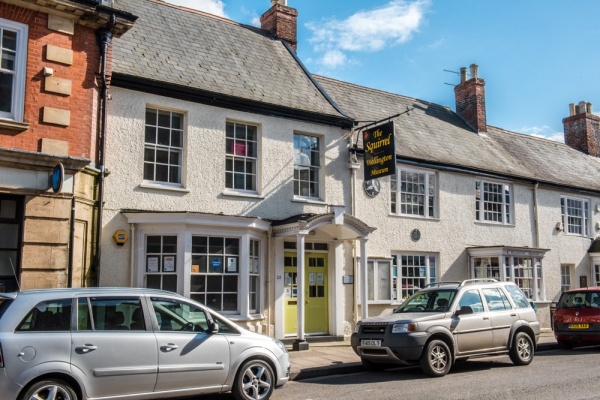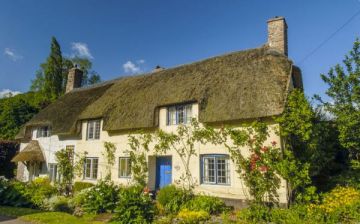
Occupying part a historic 17th-century inn on Fore Street in Wellington is the Wellington Museum, where you can explore the colourful history of this delightful Somerset market town.
The museum traces the history of Wellington from the time of the Domesday Book to the present day, with a special focus on people and companies based in Wellington or linked to the town. There are special displays on Arthur Wellesley, Duke of Wellington and his association with the town.
Of course, the Iron Duke was not the only famous person with strong links to Wellington; did you know that Poirot actor David Suchet attended Wellington School? Or that Wellington has hosted the world championships of snuff-taking?

Museum Highlights
Though the museum is quite small, it still managed to cram a lot of fascinating displays into the space. Some displays caught our eye, like the scale model of the Battle of Waterloo showing the layout of the battle lines. Another scale model depicts the Art Deco style Wellesley Theatre, a beautiful 1930s picture house that is still showing films today. The cinema model opens out to show the plush interiors.
Just inside the museum entrance is a 17th-century chest once used to store valuables in the boardroom of the Fox company. The chest is open so you can see the intricate locking mechanism inside the lid.
There is a very good 'Then & Now' photo gallery with old photos comparing Wellington scenes long ago with the same places today. There is also a display on Wellington's twinned towns in Torres Vedras, Portugal, Immenstadt, Germany, and Lillebonne, France.
There are several exhibits on companies with strong links to Wellington, including firms involved in the woollen industries, bed manufacture, and brick-making. One of the most interesting local companies was the Fox Brothers, Fowler & Co (later Fox Fowler & Co.). Fox was the last private bank in England to issue its own banknotes, and the museum has a banknote from that last series.

One fascinating local history exhibit is the Oral History Project, where you can listen to local residents talk about their experiences living and working here over time. There is also a display of domestic life with a Victorian range, washing mangle, and an early form of a food mixer.
The museum maintains a Local History Cabinet and a Reference Library, useful for finding out about local family history, the history of specific streets in Wellington, and the history of the town as a whole.
The museum is operated by the Wellington Local History & Museum Society and depends completely on donations and the contribution of volunteers.
We found the volunteer on duty when we visited to be exceptionally informative, friendly, and eager to share his knowledge about the town and the objects on show around the museum. The Society also put on regular events on the theme of Wellington heritage and organises a programme of speakers and group visits.
The Wellington Museum is open seasonally from Easter through November. Please check the official website link for days and times.
About Wellington Museum
Address: 28 Fore Street,
Wellington,
Somerset,
England, TA21 8AQ
Attraction Type: Museum
Location: On Fore Street near its junction with High Street. Parking along the street.
Website: Wellington Museum
Email: info@wellingtonmuseum.org.uk
Location
map
OS: ST138205
Photo Credit: David Ross and Britain Express
HERITAGE
 We've 'tagged' this attraction information to help you find related historic attractions and learn more about major time periods mentioned.
We've 'tagged' this attraction information to help you find related historic attractions and learn more about major time periods mentioned.
Find other attractions tagged with:
NEARBY HISTORIC ATTRACTIONS
Heritage Rated from 1- 5 (low to exceptional) on historic interest
Wellington Monument - 2.1 miles (Historic Building) ![]()
Cothay Manor and Gardens - 3.2 miles (Historic Building) ![]()
Taunton Castle (Museum of Somerset) - 6 miles (Museum) ![]()
Bishops Lydeard, St Mary's Church - 6 miles (Historic Church) ![]()
Taunton, St Mary Magdalene Church - 6.1 miles (Historic Church) ![]()
Taunton, St James Church - 6.2 miles (Historic Church) ![]()
Holbrook Garden - 6.8 miles (Garden) ![]()
Coldharbour Mill Museum - 6.9 miles (Historic Building) ![]()



